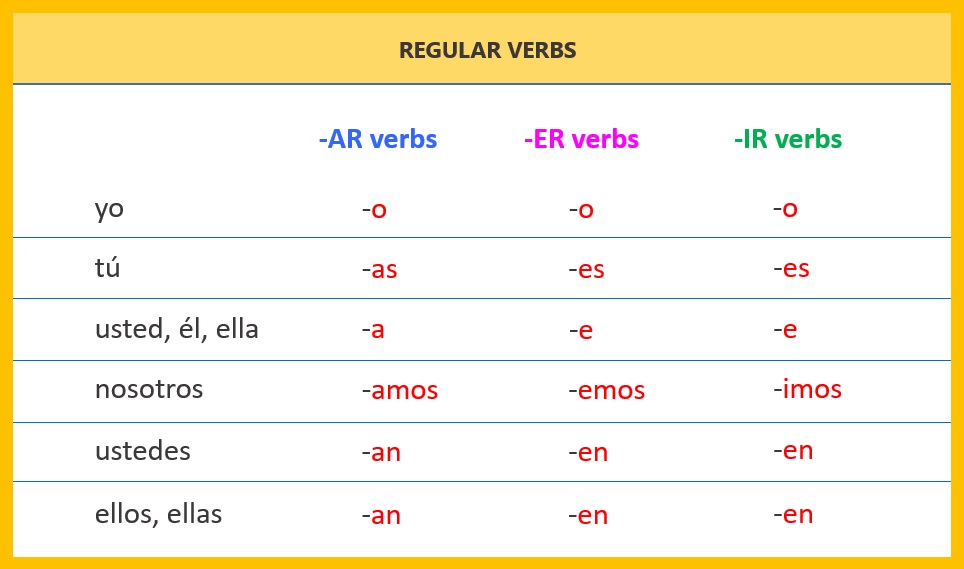
Juan está alegre y mis hermanos Andrés y Martín están emocionados. ❼uántas personas van a la escuela? TRES PERSONAS VAN A LA ESCUELA. Inés es alumna y Paco y Patricia son estudiantes. ¿Quién va más lejos? VÍCTOR VA MÁS LEJOS. Víctor va a Francia y Alicia y Pedro van al parque. Yo voy al supermercado y tú vas a la escuela. Si yo quiero once billetes y tú quieres uno, Victoria quiere tres y mis amigos quieren cinco, ¿cuántos billetes queremos todos? UDS.

Entonces, ¿cuánto dinero pusimos en la cesta? QUERER Elisa puso dos dólares en la cesta y Eduardo y Pancho pusieron diez dólares en la cesta. Yo puse un dólar en la cesta y tú pusiste tres dólares en la cesta. THIS MAKES MORE SENSE IN THE SPANISH PRETERITE: Entonces, ¿cuánto dinero ponemos en la cesta? Elisa pone dos dólares en la cesta y Eduardo y Pancho ponen diez dólares en la cesta. Yo pongo un dólar en la cesta y tú pones tres dólares en la cesta. GUSTARĪ mí me gusta el bróculi y a ti te gusta la lechuga, a Miguel le gusta la lechuga y a Ana y Pablo les gusta la coliflor, ¿Qué nos gusta a todos nosotros? LAS VERDURAS o LOS VEGETALES (NOS GUSTAN). Si yo puedo comer dos manzanas y tú puedes comer una, Ana puede comer una y mis padres pueden comer seis, entonces, ❼uántas manzanas podemos comer entre todos? UDS. Check it out! SPANISH POSSESSIVE ADJECTIVES VIDEOīelow are a few example sentences I cooked up for the remaining sweet 16 verbs. After watching the video several times, students act out their own version in groups of three or four, further cementing the concepts and improving speaking proficiency. It also reinforces the Spanish possessive adjectives. TIENEN OCHO CABALLOS.Īlthough the following video is not a word problem, it uses all verb endings of the Spanish verb TENER and is super adorable. Si yo tengo dos caballos y tú tienes dos, Carlos tiene uno y Rita y Tita tienen tres, entonces, ¿cuántos caballos tenemos? UDS. McCarson’s word problem for the present tense conjugation of the verb TENER: The questions help students assimilate Spanish Verb conjugations without having to drill verb endings or study conjugation charts. Spanish Teacher, Robert McCarson came up with the idea of word problems as another form of comprehensible input. Mike Peto expanded on the idea and suggested the sweet 16 verbs. Terry’s super seven verbs are: es, tiene, le gusta, hay, está, va a & quiere. The idea was to introduce and repeat the most commonly used verbs so students could understand messages and communicate as quickly as possible. What are sweet 16 verbs? They used to be called the Super Seven Verbs, originated by Terry Waltz. We make the exercise even better when we put high-frequency words in our game, such as the sweet 16 verbs. I did not include vosotros, but you can easily replace “ustedes” with “vosotros”.įor French, you can use je, tu, il/elle, ils/elles, nous, and vous for the answer. José und Berta are happy.For my word problems, I used only yo, tú, él/ella, ellos/ellas, and nosotros for the question, then ustedes for the answer.

sus marcas preferida s his favourite brands Example: Félix piensa a menudo en rico s platos. The masculine and feminine plural forms are formed with the ending - s.Example: la gran violinista the great violinist el gran pianista the great pianist los grandes músicos the great musicians The adjective grandeloses its final syllable in the singular (masculine and feminine) when it is placed before the noun it refers to. The following adjectives often come before the noun and lose the masculine ending - o in the singular: primer(o), mal(o), buen(o), tercer(o):Įxample: primer plato first course (of a meal).When an adjective refers to several nouns, including at least one masculine noun, then the adjective will receive the masculine ending.Įxample: José y Berta son muy simpátic os.Example: Félix está encima de la silla gris. Berta is also polite.Īll other adjectives that end in a consonant have only one form for both masculine and feminine. Berta también es cortés.) José is polite. Berta is the friendly owner (f.) of Félix.Īdjectives that end in -or, - ol, - ón, - án, - ín and - és, take an -a in the feminine form (exception: cortés). José is the friendly owner (m.) of Félix.

Example: José es el amable dueño de Félix. Alba is a white cat.Īdjectives that end in -e have only one form for both masculine and feminine. Felix is a white cat.Įxample: Alba es una gata blanc.


 0 kommentar(er)
0 kommentar(er)
